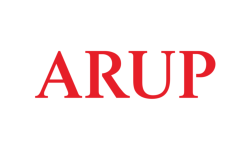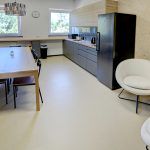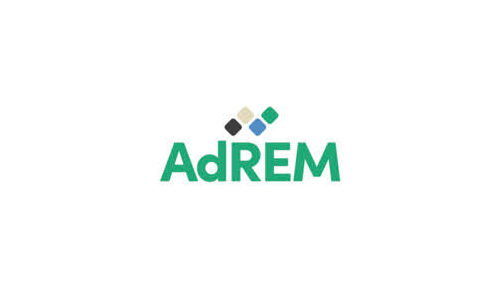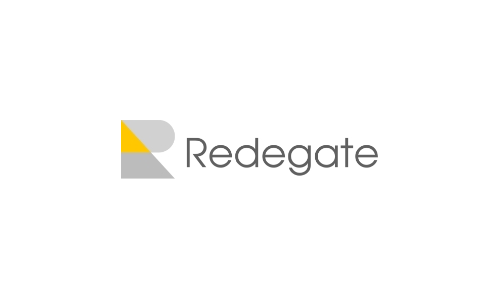

Elżbieta Cichońska, CEO of Arup Polska, talks to the BPCC’s Michael Dembinski about how the construction sector can make a vast difference in tackling the challenges of climate change, with an emphasis on ESG.
As our planet heats up, more energy in our oceans will result in storms of increasing frequency and ferocity. This will affect the built environment – not only will we need to build in a way that minimises greenhouse-gas emissions during the construction, use and demolition phases, but our entire infrastructure will need to be more resilient and inclusive against extreme weather events such as hurricanes, flash-floods, droughts and wildfires. How does Arup factor for these new demands – and how much more will it cost in future to build with climate change in mind?
Climate-resilient and inclusive infrastructure is critical. For instance, transport infrastructure ensures social cohesion, enabling users of any gender, age or disability status to participate in day-to-day life. Therefore, transport networks are central to how well societies and economies function.
Meanwhile, experts estimate that 27% of global road and rail assets are exposed to cyclones, earthquakes, or floods. [Source] A 2019 analysis by the World Bank explored potential infrastructure scenarios and estimated that every dollar of investment into strengthening infrastructure in low- and middle-income countries results in a median of two dollars in benefits, which increases to four dollars when climate change is considered. These are compelling returns, which should build support for investment in resilient infrastructure.
Resilience in the energy sector is also extremely important as we live in an increasingly data-driven world. Here, resilience may mean something else than in transport infrastructure, for example, collaboration with end users as active consumers provides a better understanding of real requirements and helps ensure more robust decision making.
With energy, transport and communications increasingly interconnected, resilience problems in one sector, can have an impact on others. Resilience is much more than technology or thinking singularly about one disruptive factor. We must look at resilience holistically and develop systemic solutions.
The construction sector is responsible for over 38% of all manmade CO2 emissions. What trends are you looking at to reduce that, in particular looking at building materials? And how can ‘circular building’ reduce the amount of waste during the demolition stage?
On top of CO2 emissions, around 95% of the value of construction materials is lost as buildings decay into obsolescence and then demolition. This is largely due to the ‘take, make, dispose’ model that has been at the heart of the real-estate and construction sectors for many years.
Luckily today, businesses are more and more aware of the fact that we need to become much better at managing our planet’s diminishing resources. Reuse, restore, regenerate is the common basis for the circular economy. But circular economy is more than embracing reusing and recycling. It’s a fundamental change in the way we design, produce and operate the built environment.
It implies a change to building methods to enable modularity, disassembly, flexibility, accessibility. It means disconnecting aesthetic from technical properties so that we can design out waste and pollution wherever possible. It also means keeping products and materials in use for as long as possible, and regenerating natural systems.
To help designers, construction clients and asset owners to understand how to adopt this vastly more sustainable way of producing the built environment, Arup has developed the Circular Buildings Toolkit (CBT), with our partners, the Ellen MacArthur Foundation. This is a set of practical strategies and measures that can help you approach this systemic shift with confidence, supported by a growing library of real-world examples.
Let’s not forget that adopting circular economy principles is not just healthy for the planet, but at the same time offers businesses profitable service offerings, developers more adaptable assets, cities reduced waste management costs and citizens improved services with lower economic and environmental costs.
Saving energy – the fifth fuel – offers users of offices, factories, warehouses, retail premises, hotels and homes a quick win in the form of lower bills and reduced emissions. But energy efficiency requires up-front investment, particularly in such solutions a building management systems (BMS), which are increasingly app-based. What are the latest trends in BMS, and at what stage does it make sense to replace older systems with the latest generation of BMS?
BMSs can indeed be used as a fifth fuel saving energy and at the same time reducing emissions, but they need to be designed and installed correctly and then – crucially – used appropriately. They can provide a wealth of data, which provides guidelines for user-comfort and potential for significant savings. Data gathered on various projects suggests that BMS improvements lead to a minimum of 10% savings in energy use, but we have seen buildings where energy saving reached over 50%.
Today’s smart systems have the ability to learn people and building’s behaviours, detect malfunctions early and predict when maintenance is needed. This helps building owners with planning, budgeting and decreases the number of unexpected repairs.
The latest BMS trends include:
Internet of Things (IoT): BMS can be integrated with various IoT devices such as cameras, wearables, sensors and smart meters, which collect data and enable real-time analysis, which BMS can then translate into optimised building performance and informed decision making.
Autonomous workforce: BMS can use AI and machine learning to automate various building operations and maintenance tasks including cleaning, repairs and security.
Energy management: BMS can optimise energy consumption and reduce carbon footprint through smart algorithms offering predictive analytics and demand response.
Contactless technology: There is an abundance of contactless technology including sensors, facial recognition and mobile apps that enable touchless access and control of building facilities. Such technology is especially useful in facilities, where risk of contamination is high and spread of bacteria must be strictly controlled.
Integrated facilities management: One of the most popular trends among asset owners – which is also linked with IoT – is integration of all BMSs and platforms, such as resource planning, customer relationship management, and building information modelling (BIM). Such integration provides a holistic view and control of building assets, resources, and services, while also improving communication between various stakeholders.
Summing up, BMS can offer significant improvements in energy efficiency, cost savings, user comfort, and safety and support the implementation and reporting of the EU taxonomy.
We have so far focused mainly on the ‘E’ of ESG but the ‘S’ is important too when it comes to building with employees – and the local community – in mind. What are the latest developments in wellness and placemaking that ESG-conscious businesses should be aware of? How does Arup factor in the surroundings of the projects it designs? How should dialogue with local authorities and communities be carried out?
It’s important to recognise that a place is defined by its people, who should always have a stake and a voice in its future. To understand the context of each place, we need to take into account several aspects. Looking at employees and offices, for the past few decades, if you thought of a workplace you probably thought of a glass and steel office building, guarding the workers housed within. Now, the workplace is a much more fluid concept, spanning the home, the coffee shop, the office building and places in between.
As we see our working lives being transformed by technology, we have reached a point at which we need to reflect on what this means for the future of physical offices and the communities surrounding them. With the stakes now raised about the role of the office after the period of home-working prompted by Covid-19, it is more important than ever to recalibrate offices around wellbeing and be part of sustainable places both socially and economically. Our award-winning office in Warsaw is a good example of embracing the wellbeing of people and planet.
At Arup, we believe that social value is the enduring, positive, and systemic change created within communities where we work, which leads to improved quality of life for individuals, and a more inclusive, equitable and just environment and society.
This why when collaborating with the local authorities and communities, we always act in a respectful, transparent, and cooperative way, to ensure that the interests and expectations of all parties are aligned and addressed. We do use various tools such as surveys, workshops, focus groups, interviews, exhibitions, and online platforms. It’s important also to keep the dialogue going to allow feedback, learning, and improvement throughout the project.
One example of a project with broad engagement with both local authorities and communities is the Green City Action Plan (GCAP), which we work on for several cities including Warsaw, Walbrzych and Split, under the EBRD Green Cities Programme. The GCAP is a strategic document that outlines the goal, and actions to transform the city into a more sustainable, liveable and resilient place.
Turning to the ‘G’ – good governance means thorough reporting of environmental and social targets. As the deadline for CSRD reporting nears, what should businesses be doing now to measure their carbon footprint and assess their ESG risks? How can Arup help in this regard?
Sustainability reporting as such is not a new concept within companies or financial institutions. However, the CSRD directive changes the reporting landscape significantly – not only does it introduce new standards (included in particular ESRS), but also covers a wider range of entities. As sustainable development has been at the heart of Arup projects for a long time, our experts are experienced in providing guidance on understanding and complying with sustainability reporting regulations, including CSRD, but also more detailed, technical criteria provided in the EU Taxonomy Regulation.
Starting with the ESG strategy, our teams can assist in setting up long-term targets as well as in year-to-year reporting. Arup prepares asset carbon footprint assessments, including LCA, conducts material assessments to identify the organisation’s most relevant environmental, social and governance issues and conducts comprehensive ESG risk assessments to identify and manage sustainability-related risks.
I like looking ahead at the macro-trends that will shape the world in which we live over the next few decades. Looking at life in urban centres, how do you think it will change as a result of our response to climate change? Will we be living in tall, compact cities, or in sprawling megalopolises, or in a more disseminated society, spread out in smaller, more local communities? Which typologies most favour sustainable development?
Globally, urban population is experiencing a rapid growth. According to the United Nations, approximately half of the world’s population currently resides in urban areas. This percentage is anticipated to surpass 68% by 2050, indicating a continuing urbanisation. Cities serve as dynamic and indispensable hubs for social, economic, and technological development. The shift towards more compact urban structures is underway, driven by a desire for proximity to everyday services such as schools and health facilities.
Growing urbanisation increased the demand on resources, significantly impacting the urban environment and the quality of life. Currently, cities contribute to 75% of global greenhouse gas emissions and consume 70% of the world’s energy.
Sustainable development is poised to play a pivotal role in shaping the future of cities. The emerging trend favours compact, vertical city designs that maximise space and minimise environmental impact through innovative architecture, green infrastructure, and efficient public transportation systems. Both smaller cities and large metropolis present unique challenges and advantages. It is up to consultants like us, in collaboration with city institutions and residents, to develop solutions that align with people’s needs, and different social groups must be included, and restore the health of the planet.
Striking a balance that accommodates the growing population’s requirements while adhering to the planet’s limited resources is crucial.
Looking at the climate-related challenges that specifically affect Poland – how do these differ from those affecting its neighbours, or does Poland face similar problems as every other country in this latitude?
Poland, like other countries in our geographical area, faces climate challenges such as the urgent need to reduce greenhouse gas emissions, adaption to the shifts in the weather patterns, including extreme weather events, protecting natural resources and improving the quality of life. At the same time, we observe Poland-specific problems related to location, history, economy and culture such as the high proportion of coal in the energy mix and the challenge of transitioning away from it, which contributes to the country’s high carbon intensity.
Droughts and water scarcity are another issue, as Poland is one of the driest countries in Europe and climate change accelerates this problem. Adaptation to climate change is also a significant challenge – according to the findings of the sixth IPCC report, Poland is lagging behind other EU member states in adapting to climate change.
There is a growing interest in Poland in implementing the requirements of the EU Taxonomy, which helps entrepreneurs who want to take action to mitigate and adapt to climate change and other environmental goals.



















